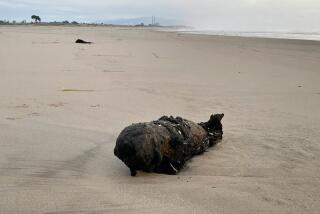Rocket Motor Burned to Test Demolition Site
- Share via
PUEBLO, Colo. — A Pershing 2 rocket motor was fired successfully at dawn today, sending a plume of exhaust across the plains in a pollution test designed to help determine whether the site can be used to demolish the missiles as required by a new U.S.-Soviet treaty.
Originally scheduled for May 20, the test burn had been delayed again and again because of bad weather. Today was the last day open for the test under the U.S.-Soviet Intermediate-range Nuclear Forces Treaty.
The 56-second test started at 6:35 a.m. at Pueblo Army Depot 15 miles east of here, officials said.
“There was a steady, bright white light from the end of the rocket nozzle extending approximately 75 to 80 feet,” depot spokeswoman Mary Wilson said.
‘Conducted Successfully’
A brownish plume stretched out horizontally before the wind swept it across sagebrush-covered plains and about 50 monitors set out by the Colorado Department of Health, which will analyze the exhaust to see if such firings would pose any threat to the environment.
“The firing was conducted successfully. We expect the test itself will be a success from our initial indications,” Wilson said.
The intermediate nuclear weapons treaty was ratified last week by the Senate, and copies are scheduled to be exchanged Wednesday at the summit meeting in Moscow between Soviet leader Mikhail S. Gorbachev and President Reagan.
To Destroy 420 Missiles
The treaty requires that the Army’s 420 Pershing missiles be destroyed, and the United States plans to destroy the missiles by firing their rocket motors, which cannot be reused.
If the test had not been done today, it would have had to be delayed by at least 30 days because it would have been governed by the treaty.
“If we were to test-fire it, it is then treated as an elimination (of a weapon) under the treaty and subject to inspection by the Soviet inspectors,” said Wilson. “They’d have to witness it. . . . We have to give them 30 days’ notice for an elimination inspection.”
Brad Beckham, director of the Health Department’s Air Pollution Control Division, said it will be several weeks before a complete assessment of the test-firing data is complete.
More to Read
Sign up for Essential California
The most important California stories and recommendations in your inbox every morning.
You may occasionally receive promotional content from the Los Angeles Times.










